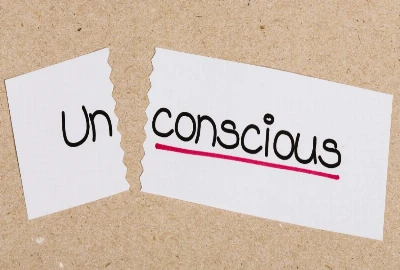Content Fatigue: When Everything Becomes a Brand and Nothing Feels Authentic

In today’s digital landscape, we are drowning in content. Every scroll, swipe, and click leads to another post, another product, another personality wrapped in a brand identity. What began as a democratization of creativity has turned into a relentless performance economy, where authenticity is commodified and attention is currency.
This constant noise has given rise to content fatigue—a deep sense of emotional exhaustion from endless consumption and self-promotion. Audiences are tired of perfectly curated lives, and creators are burning out trying to keep up. The internet has become a marketplace of identities, and somewhere along the way, sincerity got lost in the shuffle.
This blog explores how we reached this point, what content fatigue means for culture, and how both audiences and creators can find their way back to something real.
The Infinite Scroll: How Content Saturation Created Emotional Exhaustion

The Overproduction of Everything
There was a time when content was scarce—when blog posts, YouTube videos, or personal essays felt fresh and human. Now, the digital ecosystem is oversaturated. Every platform demands constant output: daily posts, trending reels, algorithm-friendly hashtags. Creators chase visibility, while audiences drown in sameness. The result? Diminished emotional engagement and a growing numbness toward digital experiences.
The internet’s design fuels this fatigue. Algorithms reward volume over value, encouraging creators to produce endlessly rather than thoughtfully. Over time, this creates a paradox: the more content there is, the less meaning it holds.
The Paradox of Choice
Psychologists call it the “paradox of choice”: too many options reduce satisfaction. When every scroll offers infinite videos, voices, and opinions, our attention fractures. Users report feeling both overstimulated and underwhelmed—trapped in an endless buffet of information that never quite satisfies.
The same applies to creators, who struggle to stand out in a saturated market. Many turn to branding and personal marketing strategies, transforming themselves into “products” to survive the digital economy.
Emotional Burnout as a Byproduct
Constant exposure to promotional content—ads disguised as authenticity—creates emotional fatigue. Users stop trusting what they see online, while creators lose motivation to share genuinely. In the attention economy, burnout isn’t a glitch; it’s the cost of participation.
The Era of the Personal Brand: When Identity Becomes Marketing

The Self as a Product
What once was self-expression has become self-promotion. Whether you’re a freelancer, influencer, or everyday user, the pressure to maintain a “personal brand” is omnipresent. Every photo, caption, or comment is an opportunity for optimization—every moment a potential post. This shift has turned identity into an asset and authenticity into a performance.
The phrase “build your brand” once belonged to corporations. Now, it’s advice for teenagers on TikTok. The line between person and persona blurs, leaving many wondering who they are when the camera is off.
The Myth of Authenticity
Ironically, “authenticity” itself has become a marketing strategy. Brands sell “realness” through vulnerability posts, unfiltered selfies, and confessional storytelling. But when honesty becomes content, sincerity loses its meaning. What we’re left with is a paradoxical culture of curated vulnerability—performing imperfection to seem relatable.
The Mental Health Toll
This constant performance takes a psychological toll. Studies show that maintaining a personal brand increases anxiety and self-comparison. Creators experience “identity fatigue,” struggling to distinguish their real selves from their online personas. Meanwhile, audiences grow skeptical, sensing the transactional nature behind every post.
The Algorithmic Trap: How Platforms Reward Quantity Over Quality

The Economy of Attention
Algorithms are designed to maximize engagement, not depth. They prioritize content that sparks reactions—likes, shares, outrage—over content that encourages reflection. As a result, creators adapt their behavior to please algorithms, not audiences. Creativity becomes mechanized, guided by trends rather than passion.
The pressure to “stay relevant” is relentless. Miss a few days of posting, and the algorithm buries you. This treadmill of production fosters burnout, creative stagnation, and emotional detachment.
Virality Over Value
Gone are the days when quality alone built an audience. Now, virality dictates worth. Content is engineered for quick dopamine hits—short, loud, clickable. The nuance of storytelling gives way to soundbites and shock value. This shift erodes trust and creates a homogenized digital culture where everyone sounds the same because the algorithm demands it.
Gaming the System
Creators increasingly rely on data analytics to understand what works, reducing creativity to metrics. This data-driven approach may boost visibility but often drains authenticity. In chasing algorithmic approval, creators risk alienating the very audiences who once resonated with their genuine voice.
The Audience Revolt: Craving Authenticity in a Branded World

The Rise of Anti-Content Movements
As audiences grow weary of digital noise, a quiet rebellion is underway. Movements like “deinfluencing” and “slow content” are gaining traction. Instead of aspirational perfection, people crave honesty, imperfection, and real emotion. Micro-communities and niche creators thrive by rejecting the polished aesthetics of mainstream influencer culture.
This shift marks a collective yearning for depth over reach—for voices that feel human rather than corporate.
The Desire for Digital Detox
Users are turning toward minimalism—not just in design, but in digital behavior. “Content diets” and “dopamine detoxes” have become popular, as people seek to reclaim mental space from endless consumption. Many find that stepping away from constant scrolling restores creativity, calm, and authentic connection.
The Rebirth of Intimacy
Platforms like Substack, Patreon, and closed Discord communities represent a return to smaller, more personal interactions. These spaces favor depth, dialogue, and community over virality. The next phase of digital connection may not be about reaching millions—it may be about meaningfully engaging with a few hundred.
Reclaiming Authenticity: How Creators and Audiences Can Break the Cycle

Creating with Intention
For creators, the antidote to content fatigue lies in intentional creation. Slowing down, prioritizing storytelling, and focusing on purpose over metrics can help restore meaning. Instead of chasing trends, creators who define their “why” can reconnect with audiences on a deeper level.
Consuming with Awareness
Audiences also play a role. Curating feeds mindfully, unfollowing performative accounts, and engaging with creators who value authenticity can transform digital spaces. It’s not just about what we consume—it’s about how we engage with it.
The Future of Digital Authenticity
As AI-generated influencers and automated content rise, the hunger for realness will only intensify. Paradoxically, technology may push us back toward human connection. In the coming years, authenticity won’t just be a branding strategy—it’ll be the last remaining currency of trust.




